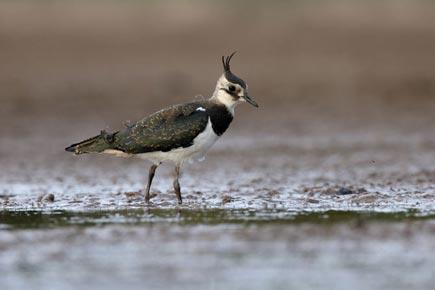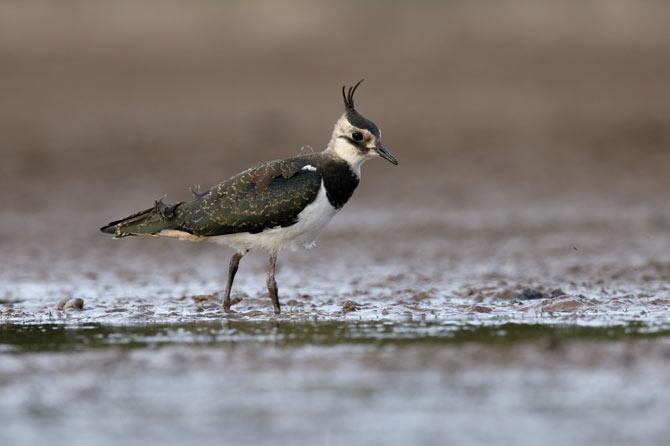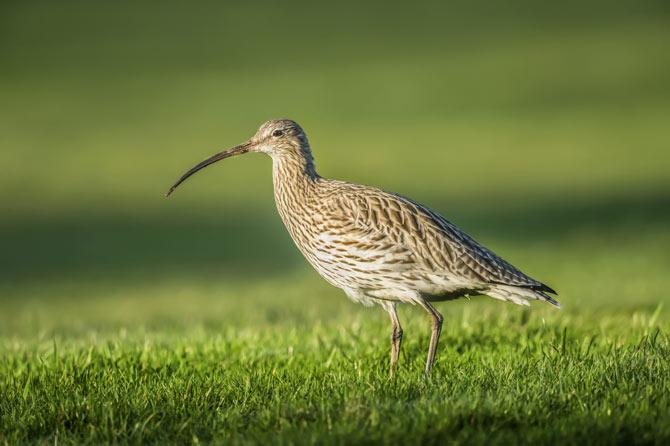The latest Red List of birds released by International Union for Conservation of Nature (IUCN) for 2015 shows that a total of 180 bird species in India are now threatened, as against 173 last year

Year after year, the condition of birds, which are one of the most obvious indicators of the state of the natural environment, is deteriorating further, due to factors like habitat destruction and unsustainable development over the last couple of decades.
ADVERTISEMENT
The latest Red List of birds released by International Union for Conservation of Nature (IUCN) for 2015 shows that a total of 180 bird species in India are now threatened, as against 173 last year. Only one species has moved out of the Red List.
The latest additions to the list, which are based on studies conducted by BNHS-India, BirdLife International (UK-based) and other partner organizations, reveal that bird habitats like grasslands and wetlands are under threat.

Northen Lapwing
Species added to Red List
Among the eight species newly added to the Red List, five have been uplisted (a sign of increased threat) from Least Concerned to Near Threatened category. These include Northern Lapwing (a grassland bird) and four wetland birds, viz. Red Knot, Curlew Sandpiper, Eurasian Oystercatcher and Bar-Tailed Godwit. Two other wetland birds, viz. Horned Grebe and Common Pochard have been uplisted from Least Concerned to Vulnerable. Steppe Eagle (a raptor from grasslands), which is a regular winter visitor to the Indian subcontinent, has been uplisted from Least Concerned to Endangered. In this bunch of negative news, there is a little positive news that the passage migrant - European Roller - has been downlisted (a sign of decreased threat) from Near Threatened to Least Concerned. In 2014, the story was similar with eight new species added to the Red List, viz. Woolly-necked Stork, Andaman Teal, Andaman Green Pigeon, Ashy-headed Green Pigeon, Red-headed Falcon, Himalayan Griffon, Bearded Vulture and Yunnan Nuthatch.
Dr Deepak Apte, Director BNHS, said “The list of threatened species keeps on increasing with every assessment. That itself symbolizes that our efforts for conservation of species are not adequate. We need to logically rethink the developmental agenda, especially for the habitats and areas where these species exist. Some of the neglected habitats should therefore be a part of protected areas or marked as ecologically sensitive sites.”
Habitat loss and other threats
Birds face a range of threats in today’s times, among which habitat loss is common to most species in the Red List. Grasslands, wetlands, forests and other habitats are getting destroyed at an alarming rate, primarily due to unsustainable developmental activities. For instance, Red Knot, which is usually found in coastal areas, mudflats and sandy beaches, is facing several threats like destruction of coastal ecosystems, land reclamation, pollution, over-exploitation of its main prey - shellfish - and illegal hunting. Similarly, Great Knot is threatened by degradation and loss of wetland habitat. Another wetland bird - Curlew Sandpiper – is under threat due to factors like reservoir and marshland alteration by commercial salt works, habitat degradation because of diminishing rainfall and hunting, particularly along the south-east coast of India near Point Calimere.
Apart from loss of grassland habitat, the other reason for decline of Steppe Eagle, which mostly scavenges on animal carcasses, is the use of veterinary diclofenac that causes renal failure in these birds, as revealed from the research conducted by BNHS and other partner organisations.
Moreover, just like the Steppe Eagle, older BNHS studies had revealed that three vulture species, viz. White-backed, Slender-billed and Long-billed have been severely affected by veterinary diclofenac. Subsequent research had also highlighted the diclofenac threat to Red-headed and Egyptian Vulture. The status of vultures in India continues to be precarious, even as efforts are on at various levels (with active BNHS participation) to conserve them, such as captive breeding, carcass surveys, advocacy, ban on veterinary diclofenac, reduction in vial size of human diclofenac and identification of vulture safe zones for future release of captive birds.

Curlew Sandpiper
Global trend
Worldwide, 40 more bird species have now been included in the Red List. These include many wading shore birds, those from other habitats, six out of 11 vulture species in Africa and other iconic species like Atlantic Puffin, European Turtle-dove and Helmeted Hornbill. On a positive note, 23 species have been downlisted to lower threat categories. In some cases, this reflects a better understanding of how they are faring, while in others this reflects recoveries as a result of conservation action, including Seychelles Warbler and Chatham Petrel.
Commenting on the vulture decline in Africa, Dr Julius Arinaitwe, BirdLife International’s Africa Programme Director said, “As well as robbing the African skies of one of their most iconic and spectacular groups of birds, the rapid decline of the continent’s vultures has profound consequences for its people – as vultures help stop the spread of diseases by cleaning up rotting carcasses. However, now we are becoming aware of the sheer scale of the declines involved, there is still just enough time for conservationists to work with law-makers and local people, to make sure there is a future for these magnificent scavengers.”
--- Atul Sathe, Assistant Director - Education & Communication, BNHS-India
 Subscribe today by clicking the link and stay updated with the latest news!" Click here!
Subscribe today by clicking the link and stay updated with the latest news!" Click here!






